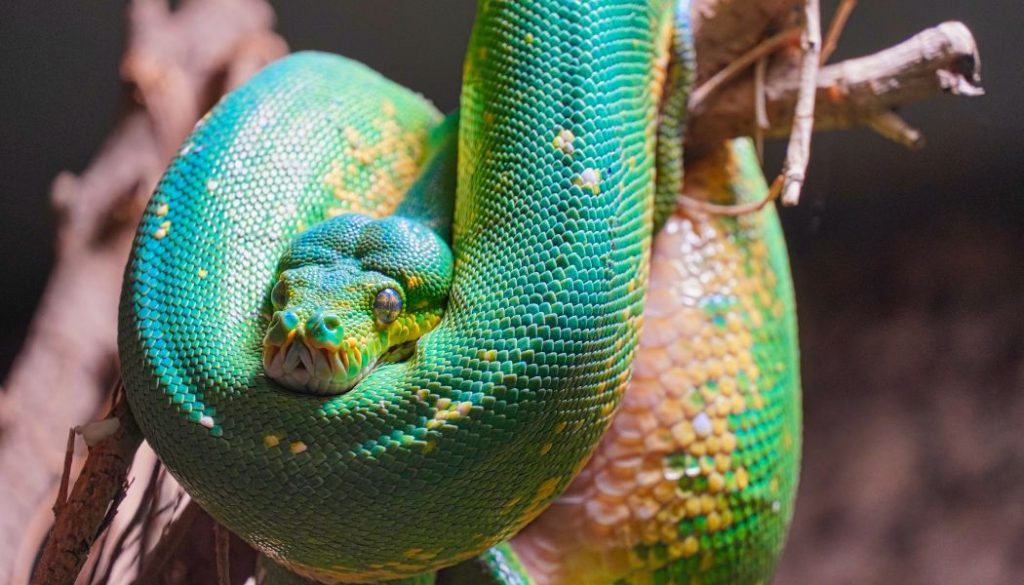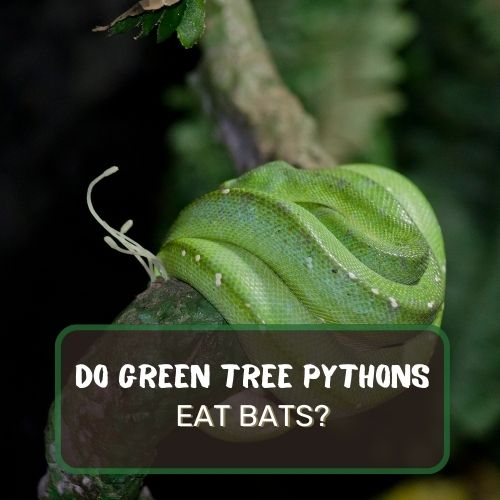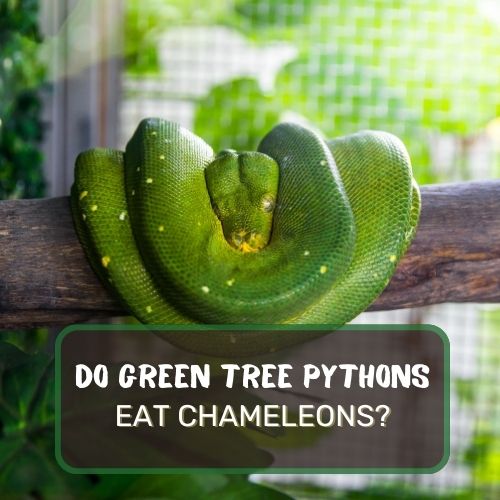Step right up, folks, and dive into the mesmerizing world of green tree pythons! Ever wondered how often these vibrant reptiles shed their skin?
Or maybe you’re curious about the signs that indicate a shedding is imminent? We’ve got all the answers right here!
Green tree pythons shed their skin at varying frequencies, depending on several factors like age, diet, and overall health. Younger pythons, still in their growth phase, may shed as often as every four to six weeks.
In contrast, adults typically shed every two to four months. It’s a natural and essential process that allows these fascinating creatures to grow and stay healthy.
So, there’s no one-size-fits-all answer, but these are the general guidelines.
This article will unravel the ins and outs of shedding in green tree pythons, from its importance and frequency to the factors that affect it.
We’ll also tackle some FAQs and common issues that might pop up during shedding. So, let’s slither our way through this fascinating topic, shall we?

Table of Contents
- 1 What is Shedding and Why is it Important?
- 2 The Life of a Green Tree Python
- 3 Shedding Frequency: The Basics
- 4 Factors Affecting Shedding Frequency in Green Tree Pythons
- 5 Signs Your Green Tree Python is About to Shed
- 6 The Shedding Process: Step by Step
- 7 Common Shedding Issues and How to Resolve Them
- 8 Conclusion
- 9 FAQ
What is Shedding and Why is it Important?
Ever noticed how kids outgrow their clothes faster than you can say “green tree python?” Well, these exotic reptiles have a similar problem, except they outgrow their skin! Shedding, also known as molting or ecdysis, is when a snake gets rid of its old, tight skin to make way for a new, more flexible layer.
Shedding isn’t just a matter of snake fashion, though. It’s crucial for their health and wellbeing. The old skin can get a bit snug and restrict movement, not to mention it’s worn out from all that slithering around.
A fresh layer allows the snake to grow and offers protection from infections and injuries. In essence, shedding is a snake’s way of refreshing and rejuvenating itself, almost like a spa day but for reptiles.
See? You and green tree pythons have more in common than you thought!
The Life of a Green Tree Python
Alright, let’s set the scene. Imagine you’re trekking through the lush jungles of Indonesia or Northern Australia. Suddenly, you spot something hanging from a tree. No, it’s not a vine; it’s a green tree python!
These fascinating creatures are the acrobats of the snake world, gracefully coiled around tree branches, just waiting for their next meal to waltz by.
Green tree pythons are not your average snake. First off, they come in vibrant shades of green, sometimes with a hint of blue or yellow.
That’s nature’s camouflage for you. Secondly, they have a unique way of resting in a loop on branches, which gives them the perfect vantage point for striking prey.
Don’t let their exotic looks fool you. These pythons are more than just pretty faces. They play an essential role in the ecosystem by controlling rodent populations. No one likes uninvited pests, right?
Moreover, they are also part of the food chain, serving as a meal for larger predators. It’s the circle of life in action.
Shedding Frequency: The Basics
Now that we’ve covered the green tree python lifestyle, let’s get down to the reason you’re here: shedding frequency. So, how often do green tree pythons shed? Drumroll, please… It varies! Yes, it’s not a one-size-fits-all scenario.
Generally, younger snakes shed more often than their older counterparts, sometimes as frequently as every four to six weeks. They’re in a growth spurt, much like teenagers who can’t stop eating or sleeping.
Adult pythons, on the other hand, typically shed every two to four months. They’ve already done most of their growing and are just doing routine maintenance.
For perspective, that’s like changing the oil in your car. Sometimes you’ve got to do it more often because you’re going on a road trip, but usually, it’s a scheduled affair. Either way, shedding is as natural to a green tree python as changing outfits is to a pop star in concert.
Factors Affecting Shedding Frequency in Green Tree Pythons
We know what you’re thinking. “You said it varies! But why?” Ah, let’s dissect this reptilian riddle. Several factors can influence how often a green tree python sheds its skin, and here are some of the big players:
Age
You guessed it! Just like kids who outgrow clothes in the blink of an eye, younger green tree pythons shed more frequently due to rapid growth. Older pythons have settled into a more predictable shedding cycle, akin to an adult buying a new winter coat every few years rather than every season.
Diet
What they eat matters. A well-fed snake that’s consuming the right nutrients is more likely to have a regular shedding schedule. Think of it as someone eating a balanced diet versus surviving on fast food. Better input means better output, even for snakes.
Environment
You can’t underestimate the power of a snake’s surroundings. Factors like humidity and temperature can speed up or slow down the shedding process. It’s almost like how your skin might feel different in winter than in summer, just more snake-like.
Seasonal Changes
Some studies suggest that green tree pythons, like many other reptiles, may align their shedding with seasonal changes. This could be related to mating or other natural cycles.
Stress and Health
If a snake is stressed or unwell, it might shed irregularly. This can be a red flag for snake owners, kind of like when you have a bad hair day and realize you need to reassess your life choices.
Signs Your Green Tree Python is About to Shed
Alright, so you’re now in the know about why green tree pythons shed and the factors that influence it. But how do you spot the telltale signs that your scaly friend is about to go through this transformation? Knowing these signs is vital if you’re a snake owner or just someone interested in reptilian behavior.
Eye Cloudiness
The eyes are the windows to the soul, and in this case, they’re the windows to shedding. Your python’s eyes will start to look cloudy or opaque. This is due to a fluid that forms between the new and old layers of skin to help the shedding process.
Color Dullness
That vibrant green may start to look a bit washed out. Don’t fret; your snake isn’t going goth on you. It’s just getting ready to shed and look even more fabulous.
Change in Behavior
A shedding python is a grumpy python. You may notice it becomes less active, more secretive, and may even avoid food. Just think of it as your snake’s way of saying, “I need some me-time.”
Reduced Appetite
No one feels like eating when they’re about to peel off a layer of skin. If your snake starts skipping meals, shedding might be on the horizon.
Hiding More Often
Snakes like privacy when they’re shedding. It’s their version of drawing the curtains and locking the door. So, if you find your green tree python hiding out more than usual, it’s probably about to shed.
The Shedding Process: Step by Step
Now that you’re a Sherlock Holmes of snake shedding signs let’s break down the process, shall we?
Pre-Shedding Stage
This is when you’ll notice all the signs we’ve just talked about. Your snake might also start rubbing against rough surfaces. It’s doing the prep work, kind of like sanding a wall before painting it.
The Actual Shedding
This is where the magic happens. Your snake will usually start the shedding at its mouth, working the old skin off like pulling off a too-tight turtleneck. The skin generally comes off in one long, continuous piece, almost like unrolling a sock.
Post-Shedding
Voila! Your snake is now sporting a brand-new layer of skin, shiny and bright. This is also the time it will probably get back to its regular routine—eating, slithering, and being its fabulous self.
Common Shedding Issues and How to Resolve Them
You’ve probably heard the saying, “Nothing worth doing comes easy.” Well, sometimes shedding isn’t a walk in the park for green tree pythons either. Here are some issues they might encounter and how to resolve them:
Incomplete Shedding
Sometimes the old skin doesn’t come off entirely in one go. This is like trying to peel an orange and ending up with bits of peel still clinging to the fruit. An incomplete shed can lead to skin infections. Soaking the snake in a shallow bath can help loosen the remaining skin.
Shedding in Patches
Instead of shedding in one piece, the skin comes off in patches. It’s the snake equivalent of peeling after a bad sunburn. This often happens if the humidity is too low. A humidifier or misting can help fix this.
Eye Caps Staying On
The skin over the eyes, known as the eye caps, sometimes doesn’t shed off with the rest. Think of it as leaving your sunglasses on all day and night. A vet visit might be necessary for this one.
Solutions and Remedies
- Check Humidity: A hygrometer can help you keep track.
- Water Dish: Make sure there’s a water dish large enough for soaking.
- Vet Consultation: When in doubt, consult the experts.
Conclusion
You’ve just navigated the winding world of green tree pythons and their shedding habits. From understanding why shedding is crucial to pinpointing the signs that your snake is about to shed, you’re now well-equipped with valuable insights.
You’ve also learned about the factors affecting shedding frequency and common shedding issues. It’s all part of the grand adventure of keeping or studying these fascinating creatures.
So whether you’re a current or aspiring snake owner, or just someone intrigued by the natural world, may your journey with green tree pythons be as enriching as the layers they shed!
FAQ
How do Green Tree Pythons Shed?
Green tree pythons go through a multi-step process, from showing pre-shedding signs like eye cloudiness and reduced appetite to the actual shedding of skin, which usually starts at the mouth and ends at the tail.
Do Green Tree Pythons Like to Be Held?
This isn’t a one-answer-fits-all situation. Some green tree pythons tolerate handling better than others, but they’re generally not as social as some other snake species. Remember, these are tree-dwellers; they prefer branches over hands!
Are Green Tree Pythons Hard to Keep?
They can be a bit challenging for beginners. Green tree pythons require specific humidity levels, temperatures, and have particular dietary needs. But if you’re committed and do your homework, they make rewarding, beautiful pets.
How Long Does it Take for a Green Tree Python to Turn Green?
Ah, the color change is like the puberty of the green tree python world. Most hatch out in shades of yellow or red and take about a year to turn that signature green. It’s a fascinating transformation, to say the least!
And there you go! From shedding frequency to color changes and common issues, consider yourself a green tree python guru. Pretty cool, huh?




0 Comments